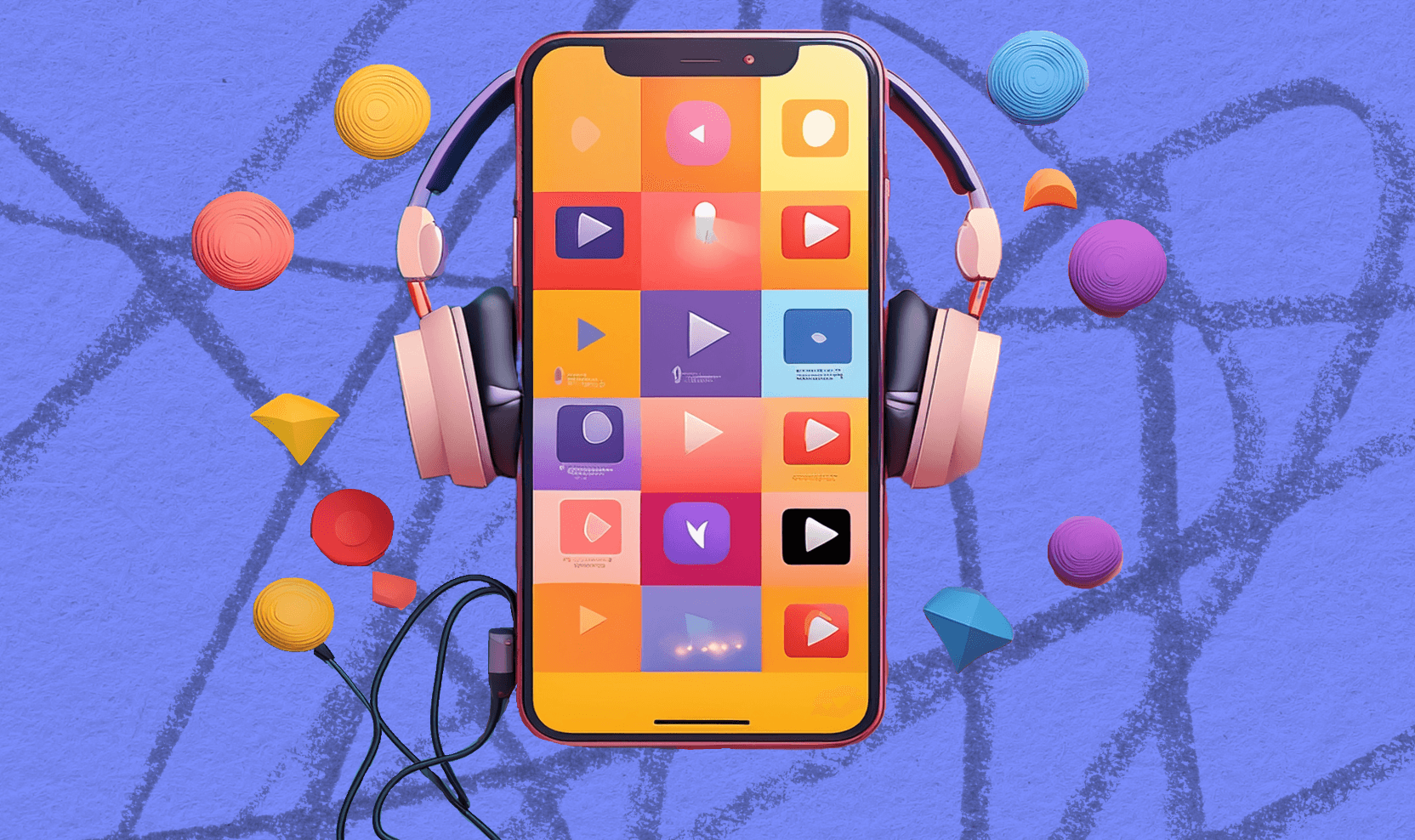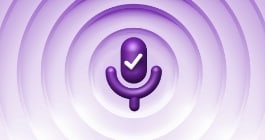Unlock more with the Adobe Podcast Premium plan 
- Video support for MP4, MOV, and more
- Bulk upload files for enhancement
- Adjust strength for a more natural sound
- Enhance up to 4 hours a day, files up to 1 GB
- No download limits on Studio projects
- Download original recordings, speaker-separated
- Customize audiograms and captions with themes
- Upload custom backgrounds for audiograms
- All Premium features for design
Enhance Speech
Studio
Design with Adobe Express Premium
Why bother with video?
Lights, camera, podcast: The case for adding video.

Last updated: April 13, 2025
Author: Megan Schmidt, Writer & podcast producer
We get it, there are plenty of reasons not to add video to your podcast: it’s more work, it’s more time, and it feels contradictory to an audio-first art form. But there’s no point in denying how helpful video is to both you and your audience. Plus, if you already have a cameraphone or laptop with a built-in webcam, it’s really not that much more work.
Not convinced? Let’s get into some of the reasons it might be time to think about adding video to your podcast.
Video increases audience engagement
When it comes to finding a new podcast, listeners go to Spotify, Apple Music, and YouTube. While Spotify and Apple Music accept audio files, if you want to get on YouTube, you need to upload some kind of video.
And the growth of YouTube as a podcast platform is undeniable. Westwood One noted: "YouTube has pulled away from the pack and leads as the most used podcast audience platform in the U.S., used by 34% of weekly podcast consumers."
Why miss out on that massive segment of potential listeners? Just by bringing your content to a second platform, you can unlock an entirely new audience. After all, YouTube has over 2.5 billion viewers worldwide – that’s a massive audience for your content. Cumulus Media also makes plenty of other observations about podcast consumption on YouTube:
- YouTube offers a massive network of viewers. While most users aren’t there for podcasts specifically, many are keen to watch or listen to new material that grabs their attention.
- Most YouTube pages offer better SEO potential. Being an Alphabet-owned platform, it’s no surprise that properly optimized pages with good traffic will appear higher in search engine result pages than content on other platforms.
- People favor listening as much as watching in most cases. Many might play video content but only listen to the audio.
And don’t forget, video has merit because of human cognition—simply put: humans are drawn to staring at other humans. Science! Not all of our communication is language, so we can usually connect better with audiences when they can see facial expressions and body language. For some podcasts, this helps add a humanizing touch that helps build trust.
The Internet treats video better
Because people gravitate toward more visual content– search and recommendation algorithms tend to favor material with video over text or audio-only content. This goes deeper than just Google, as other platforms like Facebook, Instagram, and X/Twitter, all tend to prioritize video in user feeds.
A bigger footprint can mean better SEO
Without delving into the weird, complex world of search engine algorithms, Search Engine Optimization (SEO) is traditionally how something like Google ranks content around keywords and other metrics to place content higher or lower on a search engine results page.
For a podcaster, this means your content will be easier to discover. A few good practices to follow for content include:
- Create well-written descriptions: this helps provide context for users and helps web crawlers learn about your content.
- Look into keywords and hashtags: unlike pieces of written content (like this blog) that are subject to several SEO “rules,” most social posts and media uploads can benefit from dropping in a popular search phrase.
- Use visuals and fill everything out completely when publishing content: this helps maintain a polished look, and the meta information you provide helps underlying algorithms.
Using video effectively
Many platforms now natively cater to short-form video content, like stories and reels on Facebook or Instagram, or shorts on YouTube. And when you have published video content, it’s much easier to package bite-sized clips to reuse on these platforms.
Creating short clips for various social platforms allows you to add easily digestible content to social platforms. This can give your followers a highlight reel of your show, make bits easier for listeners to share, and help find new potential viewers.
Video is more accessible
Not only is video helpful for your growth, it’s also a major accessibility factor. It’s important to keep people of varying abilities in mind, and video can help people who have difficulty hearing.
With video, you can easily provide transcripts or subtitles. Adobe Podcast Studio allows you to obtain a transcript from files you upload. There’s also a new feature, Audiograms, that allows you to easily add animated audio clips with waveforms that enable the visualization of highlights and quotes from content.
Add video to your arsenal to keep pace with the market
Podcast listeners are increasingly interested in consuming content through video platforms.
You don’t need a full-scale video production to use video effectively, but a more visual version of podcasts can help broaden audience appeal. By using video-first platforms like YouTube, you gain access to new potential viewers, even if they plan to simply listen to your content.
And with Adobe Podcast, there’s no easier way to get a video than by using Audiograms. All it takes is one click for you to unlock an entirely new audience.
About the author: Writer, comedian, podcast producer: Megan loves stories that stick, told sometimes with words, sometimes with waveforms, always with heart.



